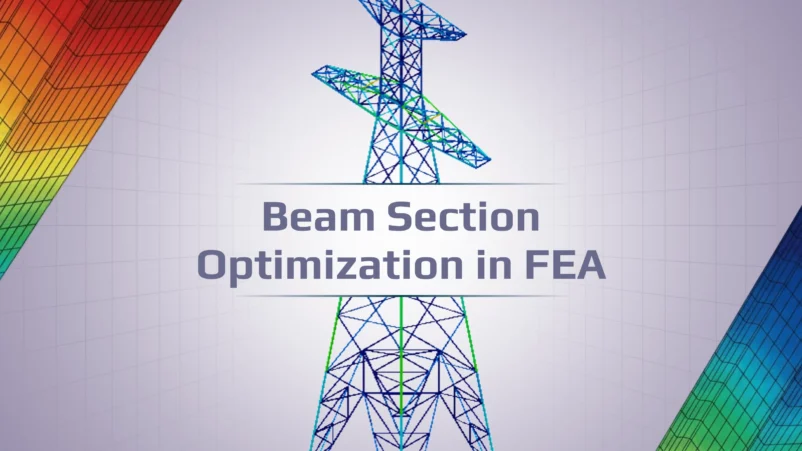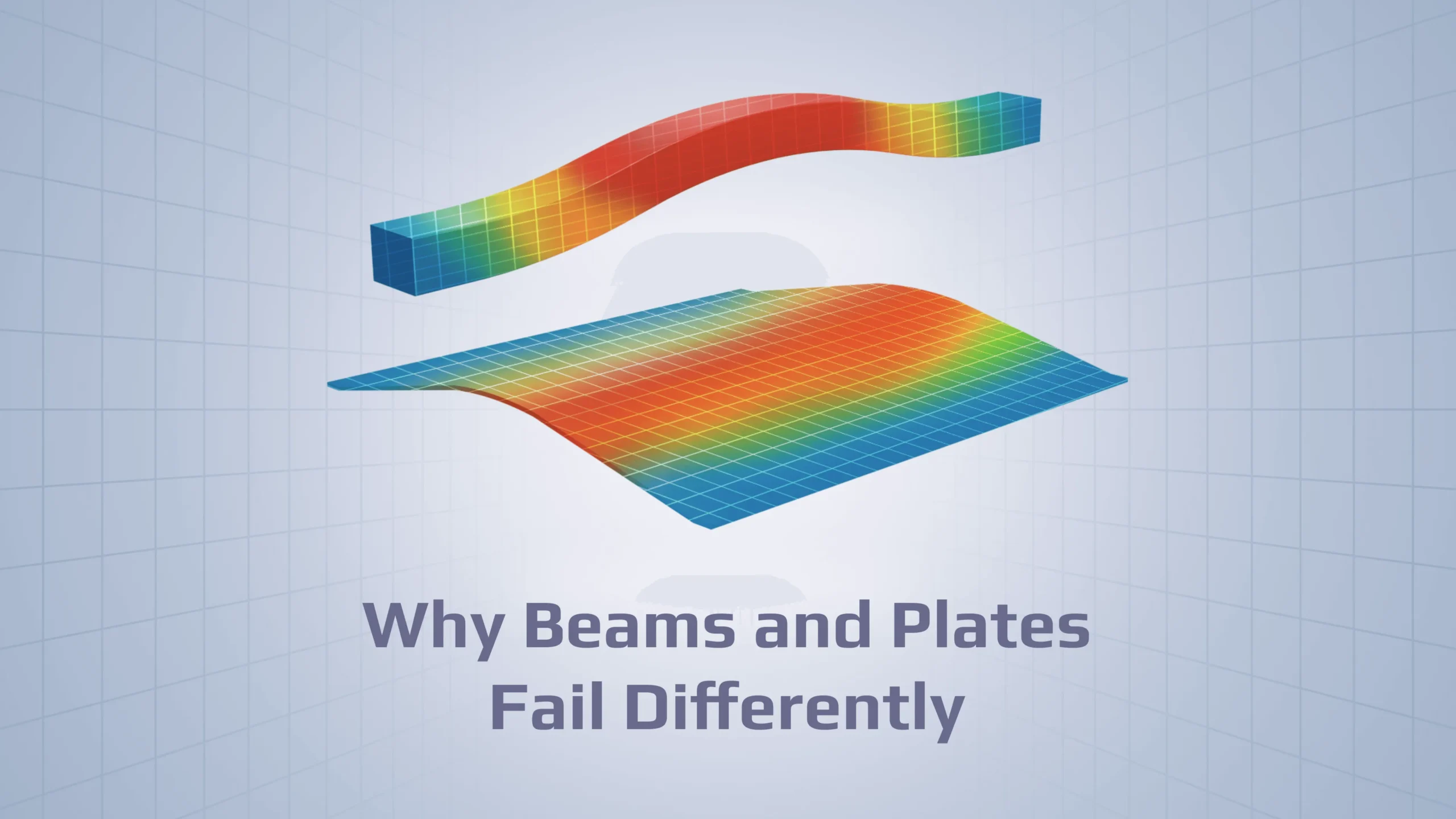Implementation of ISO 19902 (Fixed Steel Offshore Structures) in SDC Verifier

SDC Verifier implements both version of ISO 19902 (ISO 19902:2007 first edition and ISO 19902:202 second edition) standards for the strength of tubular members and tubular joints checks.
To check large (offshore) lattice structures according to ISO 19902, the joints and members must be identified (detected) in the standard FEA model. It could be done manually, but for large modes it took too much time:
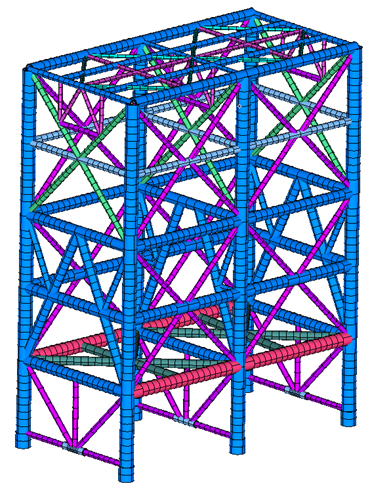
With the help of Joint Finder and Beam Member Finder, SDC Verifier automatically detects the members (left) and the Joints (right):
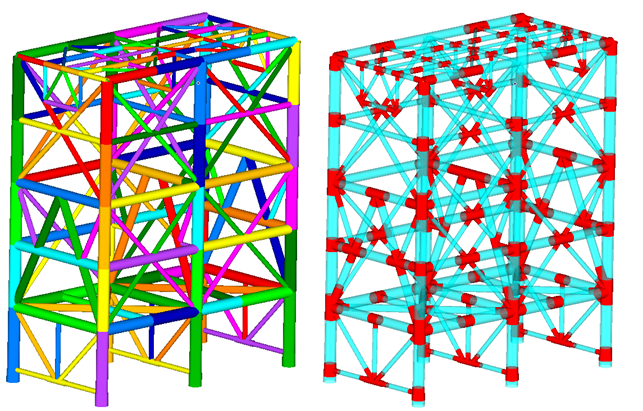
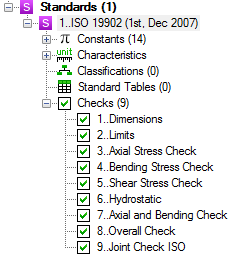
The ISO 19902 Standard contains the following checks:
- Axial Stress Check,
- Bending Stress Check,
- Shear Stress Check,
- Hydrostatic Stress Check,
- Combined Stress Check,
- Overall Stress Check.
It is very easy to check the strength of tubular members for a set of results using Load Group (Envelop) extreme table:
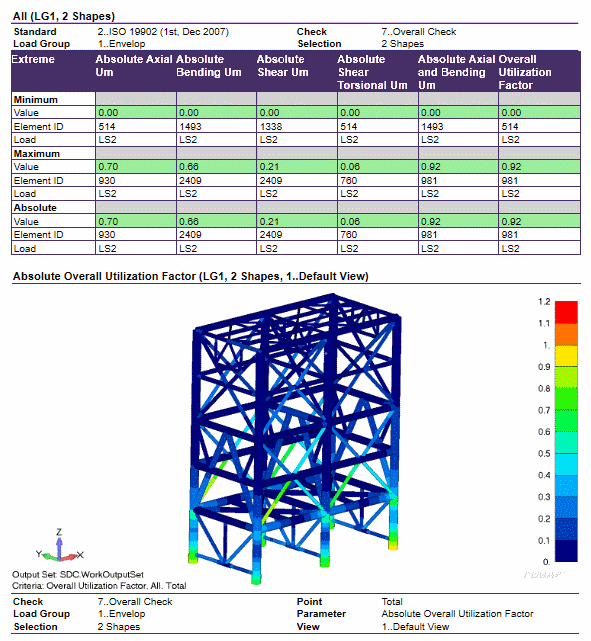
Verification of the tubular joints is performed by Joint Check. Fully automated detections of connections with their geometrical parameters and brace classification (that depends on loading) what is done by Recognition Tools significantly speeds-up the verification process.
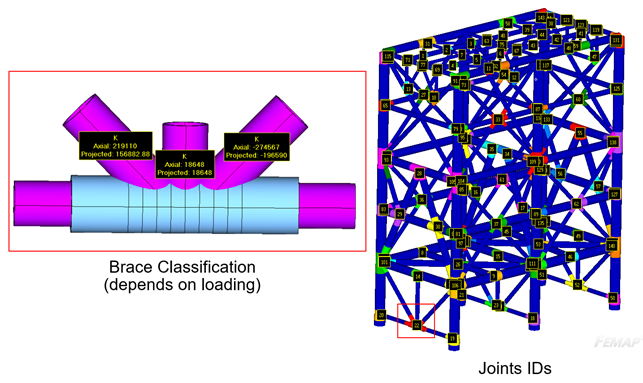
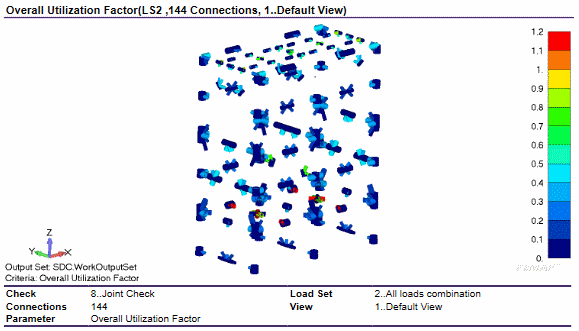
ISO 19902 standard based upon the API RP 2A standard which is also implemented in SDC Verifier. Here is the tutorial on API, ISO, Norsok Beam Member Check.
There are other standards implemented that enables beam member and joint checks for steel structures:
- AISC ASD 1989 Members (9th, 1989)
- AISC 360-10 Members (14th, 2010)
- API RP 2A-LRFD (1st, 1993)
- API RP 2A-WSD (21st, 2007)
- Eurocode 3 Members (EN1993-1-1, 2005)
- ISO 19902 (1st, 2007)
- ISO 19902 (2nd, 2020)
- Norsok N004 (rev.3, 2013)
Beam Member and Joint Checks according to ISO 19902 and other standards available in SDC Verifier Professional or in SDC Apps: Beam Member Check App and Beam Member and Joint Checks App.


